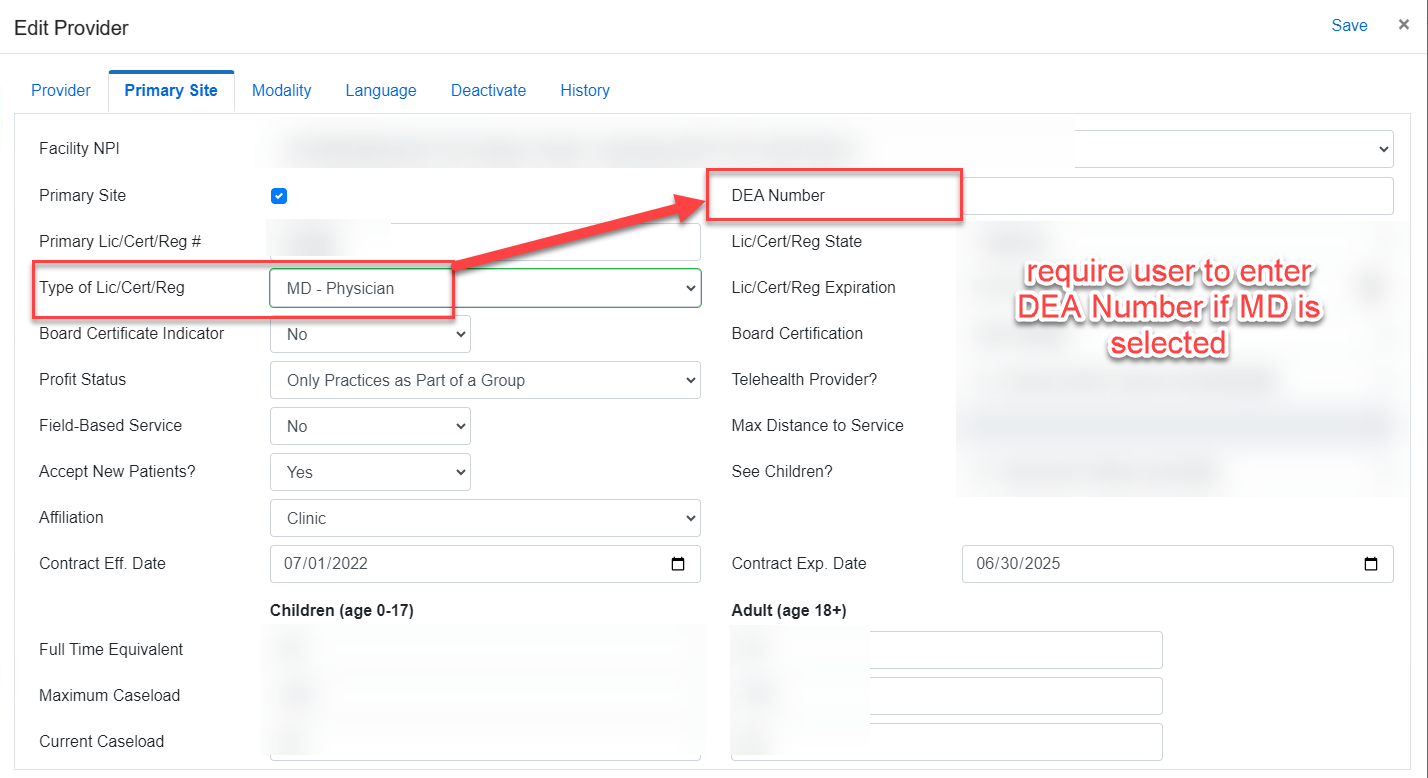Situation Validation in C#
Introduction
When working with form submissions in C# .NET, business logic may require dependencies between form fields. For example, if a form has two fields, Type License and DEA Number, selecting the option MD - Physician should make the DEA Number field required.

How do we achieve this?
- Use custom validation or
ValidationAttribute - Create a dependent or situational validator
Create Situational Validator
public class SituationalValidator : ValidationAttribute
{
public string DependentField { get; set; }
// Constructor to initialize the dependent field
public SituationalValidator(string dependentField)
{
DependentField = dependentField;
}
// Override the IsValid method to include custom validation logic
protected override ValidationResult IsValid(object value, ValidationContext validationContext)
{
// Get the object instance and validation context
object instance = validationContext.ObjectInstance;
if (validationContext != null && instance != null && !String.IsNullOrWhiteSpace(validationContext.MemberName))
{
Type type = instance.GetType();
PropertyInfo dependentInfo = type.GetProperty(DependentField);
if (dependentInfo == null)
return new ValidationResult(String.Format("Invalid dependency: {0}", DependentField));
// Get the value of the dependent field
object dependentValue = dependentInfo.GetValue(validationContext.ObjectInstance, null);
if (dependentValue == null || String.IsNullOrWhiteSpace(dependentValue.ToString()))
return ValidationResult.Success;
// Check if the dependent field condition is met
bool conditionMatched = false;
if (dependentInfo.PropertyType == typeof(bool) || dependentInfo.PropertyType == typeof(bool?))
{
if (!Boolean.TryParse(dependentValue.ToString(), out conditionMatched))
conditionMatched = false;
}
if (!conditionMatched)
return ValidationResult.Success;
// Get the value of the field being validated
PropertyInfo propertyInfo = type.GetProperty(validationContext.MemberName);
if (propertyInfo == null)
return new ValidationResult(String.Format("Invalid object member: {0}", validationContext.MemberName));
object memberValue = propertyInfo.GetValue(validationContext.ObjectInstance, null);
if (memberValue == null || String.IsNullOrWhiteSpace(memberValue.ToString()) || memberValue.ToString() == Int16.MinValue.ToString())
return new ValidationResult(ErrorMessage != null ? ErrorMessage : String.Format("[{0}] is required.", validationContext.MemberName));
return ValidationResult.Success;
}
return new ValidationResult(String.Format("Invalid value: {0}", value));
}
}
Next, create the dependent field IsDEARequired and use the SituationalValidator attribute on the DEA Number property.
// Declare the dependency field
[Newtonsoft.Json.JsonIgnore]
public bool IsDEARequired
{
get
{
// Specify the conditions under which the DEA Number is required
return LicenseType == "MD" || LicenseType == "NPA" || LicenseType == "PAS";
}
}
// Apply the SituationalValidator attribute to the DEA Number property
[SituationalValidator(nameof(IsDEARequired), ErrorMessage="[DEA Number] is required.")]
public virtual string DEANumber
{
get
{
// Business logic here (if any)
}
set
{
// Business logic here (if any)
}
}
As a result, the validation will display as shown below.
